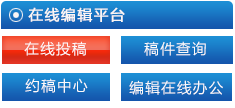临床护理
循证护理在预防气管插管患者口腔感染中的应用
上官美琴 赵娜*
【摘要】 目的 分析循证护理在预防气管插管患者口腔感染中的应用效果。方法 选取我院急诊重症监护室于2022年6月至2022年12月收治的72例经口气管插管成年患者作为研究对象,将其按照随机数字表法分为对照组(36例,采用常规护理)与观察组(36例,(样本量太少)采用循证护理。对比两组的护理效果。
【关键字】 气管插管,口腔感染,循证护理,应用效果
中图分类号:文献标识码:文章编号:
Objective To analyze the application effect of evidence-based nursing in preventing oral infections in patients undergoing tracheal intubation. Method Seventy-two adult patients who underwent tracheal intubation in the emergency intensive care unit of our hospital from June 2022 to December 2022 were selected as the study subjects. They were randomly divided into a control group (36 cases, using routine care) and an observation group (36 cases, using evidence-based care if the sample size was too small) using a random number table method. Compare the nursing outcomes between the two groups. Result Both groups of patients achieved certain results after taking corresponding nursing measures, but the observation group showed better willingness to perform, incidence of adverse events , and incidence of ventilator-associated pneumonia (VAP) among the operating nurses after adopting evidence-based nursing compared to the control group, with statistically significant differences (P<0.05). Conclusion: The use of evidence-based nursing in the prevention of oral infections in patients with tracheal intubation can achieve better results, effectively improve the awareness and execution rate of nursing staff, reduce the risk of oral infections.
气管插管是指通过声门将经过专门规划的气管插管插入气管内,为气道进入、通气、供氧、吸入和避免误吸提供最佳前提。气管内插管可同时吸出气管内的排泄物或异物,防止异物进入呼吸道,保持呼吸道通畅[1-3]。但患者置管后易引发一系列并发症,因此,对这类患者进行口腔护理是临床实践中常用的方法。口腔护理作为一种常规的基础护理操作,在过去应用于口腔气管插管患者时面临一定的风险和困难,导致口腔清洁不彻底,口腔卫生状况不佳。因此,有必要探索一种更为有效的口腔护理方法,以提高口腔清洁度,减少由此产生的并发症[4-5]。循证护理是一种新的护理模式,临床护理人员通过实践护理过程,正确、全面地了解患者及其潜在疾病,针对疑难问题找到最佳证据,联系实践,有效解决问题,取得最佳效果[6]。基于此,本文研究了循证护理在预防气管插管患者口腔感染中的应用效果,现报道如下。
1 对象与方法
1.1 对象 选择2022年6月至2022年12月在我院急诊重症监护病房住院的成人患者72例作为研究工具,按随机数字表分为对照组:36例,男20例,女16例,年龄45~88岁,平均(56.24±4.32)岁;其中重型颅脑损伤17例,多发创伤10例,脑血管意外7例,其他2例。观察组:36例,男21例,女15例,年龄43~88岁,平均(56.41±4.13)岁;其中重型颅脑损伤14例,多发创伤9例,脑血管意外7例,其他6例。两组一般资料差异无统计学意义(P>0.05)。纳入标准:两组患者家属对本研究的细节有具体的了解,并签署了批准信;两组均为经口气管插管患者;年龄>18岁;临床资料完整。排除标准:有严重不良事件和并发症的患者不适合进一步干预和研究;不同意学习方式的人;插管时发生肺部感染;口腔疾病患者;气停滞;认知障碍患者;中途退出者。
1.2 方法 对照组采用常规护理:用z形血管钳将浸有生理盐水的棉球插入患者口腔,依次擦洗嘴唇、面颊、牙齿、舌苔和上颚,每隔8 h进行1次,3次/日。观察组采用循证护理,具体为:
1.2.1 循证证据检索和质量评价
1.2.1.1 明确循证问题 根据“PICO”原则确定检索关键词,①目标入群(Population,P):成人经口气管插管患者。②干预措施(Intervention,I):口腔护理方式。③结局(Outcome,O):口腔护理质量。










